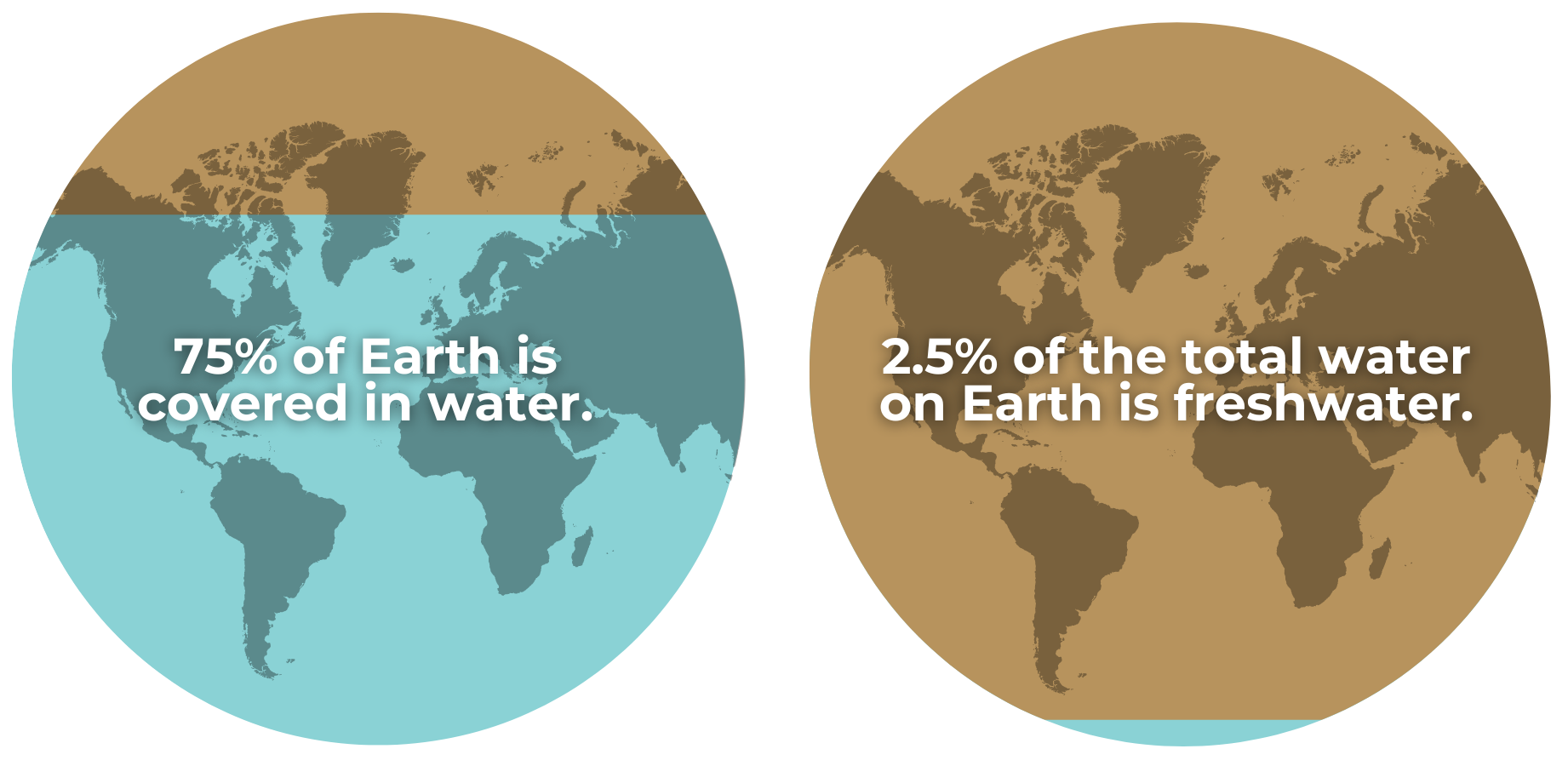Why Conserve

About 75% of our planet is covered by water; however, only 2.5% of that is freshwater, and people can only access about 1% of that total amount of freshwater. Roughly 69% of accessible freshwater is trapped in glaciers and ice caps, about 30% is stored beneath the ground, and only about 1% is contained on the surface, such as rivers and lakes.
Water may seem like a “renewable resource,” meaning a supply of something that can be replenished in a short period of time. However, in certain parts of the world, freshwater has become scarce due to changes in weather patterns, such as less rainfall and warmer temperatures, as well as overuse of this supply. Understanding how limited freshwater is and how it impacts our region may help us understand the importance of conserving it.
Where our Water Comes from
Approximately 60% of Texas’ water supply comes from groundwater, and the remaining water is supplied from alternative water sources like treated surface water or reclaimed water. More specifically, in the Gulf Coast region, groundwater is pumped from the Gulf Coast Aquifer, and other water sources are found in the Trinity, San Jacinto, and Brazos river basins. In 2023, about 50% of Fort Bend County’s water was supplied from groundwater, while Harris and Galveston counties used groundwater for about 23% of their water supply.
the Gulf Coast Aquifer
The Gulf Coast Aquifer is made up of a unique blend of sand, silt, and clay with water. Wells are drilled into the aquifer to pump groundwater. When the water is pumped faster than the aquifer can naturally replenish, the sand, silt, and clay begin to compact. This compaction is seen at the surface as the land “sinking” or subsidence and has contributed to increased flooding and infrastructure issues. Hence, there is a need to reduce reliance on groundwater and implement water conservation best practices.
For groundwater systems like the Gulf Coast Aquifer, how water is stored and replenished underground is more complex and relies on what is happening on the surface. Aquifers receive water through a process called groundwater recharge. Groundwater recharge is difficult to measure due to changes in groundwater withdrawals, rainfall, and land use, which is primarily going from undeveloped to developed land. In fact, recharge rates to the uppermost portion of the Gulf Coast Aquifer can vary from 0.2 inches to over 7 inches in Montgomery and nearby counties.
Importance of water conservation in our area
Water conservation is the easiest, most cost-effective way for Texans to sustain the region’s water supply as well as the integrity of natural resources and infrastructure. Water conservation is an important tool to make sure we have enough water today and into the future. The Region H plan predicts that in 2070, our biggest opportunity to save water—more than 60%—is related to municipal water conservation. That means the water we use at home and at work matters.
Let’s take charge of preserving this valuable resource by implementing better habits and understanding that water is not a renewable resource but rather a reusable resource that needs to be handled with care. Explore the educational resources on our website to learn more about conserving water!
